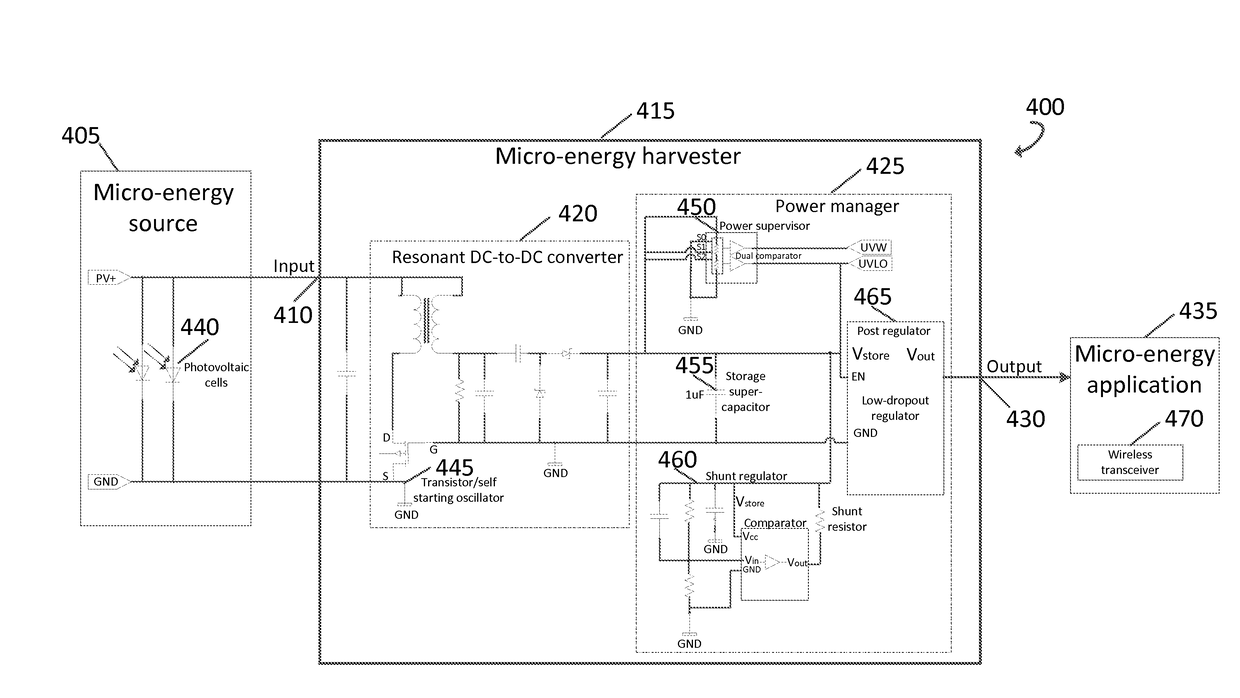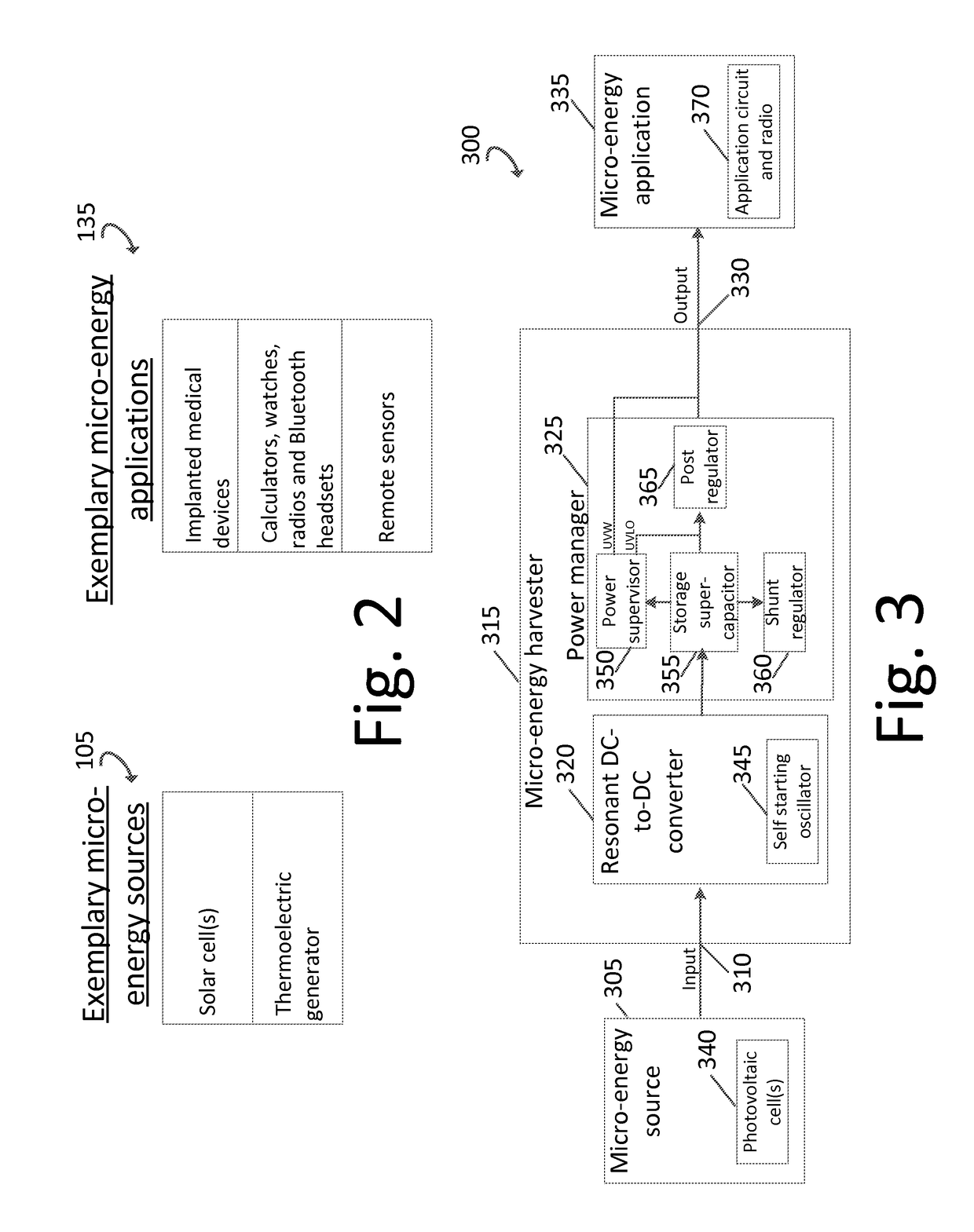Micro-energy harvester for battery free applications
a micro-energy harvester and battery-free technology, applied in the direction of electric variable regulation, instruments, power conversion systems, etc., can solve the problems of not being useful, not being useful, and micro-energy applications currently not including cell phones, laptops, or other devices, so as to improve conversion efficiency, and avoid large startup current draws
- Summary
- Abstract
- Description
- Claims
- Application Information
AI Technical Summary
Benefits of technology
Problems solved by technology
Method used
Image
Examples
Embodiment Construction
[0025]Further features and advantages of the invention, as well as the structure and operation of various embodiments of the invention, are described in detail below with reference to the accompanying FIGS. 1-5, wherein like reference numerals refer to like elements.
[0026]Although the micro-energy harvester is at times illustrated and described as being separate from the micro-energy source, the power manager, and micro-energy application, in some embodiments all of these are together on one circuit board. Additionally, although the invention is at times described and illustrated as working with a particular micro-energy source as the input power, such as a solar cell, the micro-energy harvester can work with other micro-energy input power source in other embodiments (e.g., a thermoelectric generator).
[0027]Embodiments of the present invention provide an electronic circuit to harvest and store energy from micro-energy sources such as small solar cells or other environmental low ener...
PUM
 Login to View More
Login to View More Abstract
Description
Claims
Application Information
 Login to View More
Login to View More - R&D
- Intellectual Property
- Life Sciences
- Materials
- Tech Scout
- Unparalleled Data Quality
- Higher Quality Content
- 60% Fewer Hallucinations
Browse by: Latest US Patents, China's latest patents, Technical Efficacy Thesaurus, Application Domain, Technology Topic, Popular Technical Reports.
© 2025 PatSnap. All rights reserved.Legal|Privacy policy|Modern Slavery Act Transparency Statement|Sitemap|About US| Contact US: help@patsnap.com



